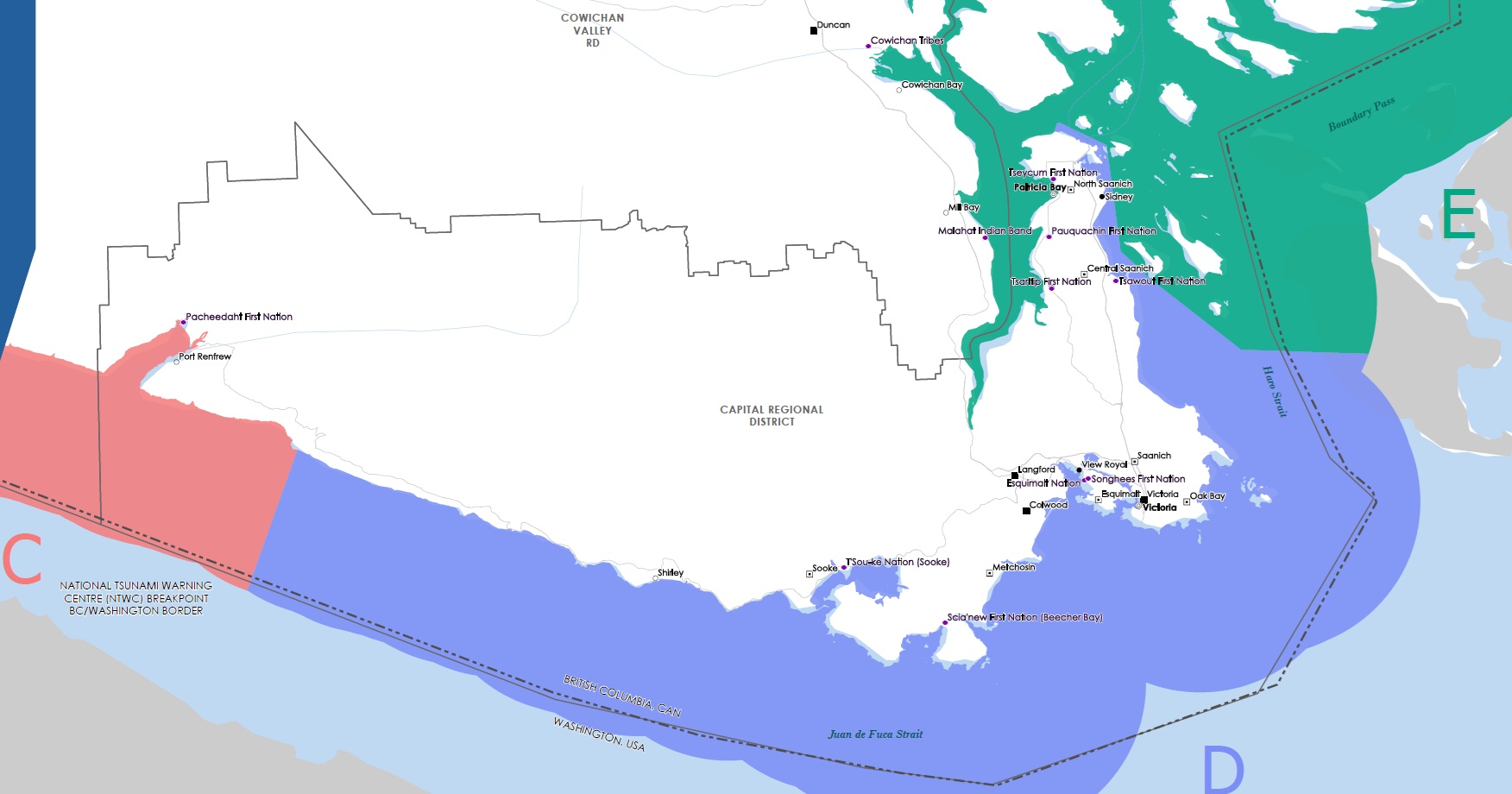A Tsunami is a series of ocean waves that are sometimes generated at the same time as an underwater earthquake. Large underwater landslides can also displace a great deal of water and generate a tsunami.
A tsunami wave can race outward in all directions at speeds of up to 800 kilometres an hour and can reach heights of six to nine metres at the shoreline.
Tune in to Radio Sidney to hear Fire Chief Brett Mikkelsen in conversation with Peter Wainwright on Peninsula Affairs. In this interview, Chief Mikkelsen discusses the recent tsunami alerts issued on July 29–30 2025 following the earthquake in Russia. He also explains the Saanich Peninsula Alert system and shares important information about tsunami risk and preparedness specific to Sidney.
What Should I Know About a Tsunami?
- They have nothing to do with the tides or the weather and act differently from ordinary waves.
- They can move through the ocean at intense speeds and be scarcely noticeable, even when passing under a boat.
- The first wave of a tsunami is often not the largest; others may follow for a period of several hours.
- Their danger lies in shallow waters, near shore.
- Heights of the waves increase as the tsunami runs into river and coastal channels.
Types of Tsunami Alerts
Alert Level
Threat
Action
WARNING
Flood wave possible
Full evacuation suggested
ADVISORY
Strong currents likely
Stay away from the shore
WATCH
Danger level not yet known
Stay alert for more information
INFORMATION STATEMENT
Minor waves at most
No action suggested
CANCELLATION
Tidal gauges show no wave activity
Confirm safety of local areas
Tsunami Notification Zones
British Columbia is divided into five Tsunami Notification Zones. Knowing your zone will help when a Warning, Advisory or Watch is issued by the Ministry of Emergency Management and Climate Readiness.
The Town of Sidney falls into the Tsunami Notification Zone D.
How Can I Prepare Myself For a Tsunami?
- Sign up for Saanich Peninsula Alert to ensure you receive critical alerts during an emergency. Information regarding sheltering in place or evacuation instructions would be delivered over Saanich Peninsula Alert.
- Create emergency kits for the purpose of sheltering in place, and grab-and-go in the event of an evacuation
- Make a plan that includes designated meeting places and emergency contacts
For more information, familiarize yourself with the Capital Regional District’s Tsunami Information Portal Map. This mapping tool hosts data and widgets that allow you to visualize and gain a holistic understanding of tsunami related information based on assets, data and real to near-real time events that are available. It allows residents and guests in the capital region to understand their tsunami hazard risk.
In the video below, Town of Sidney staff provide a brief demonstration on how to utilize the Capital Regional District’s Tsunami Information Portal Map, specific to Sidney.
For any further inquiries, you are welcome to contact Emergency Management staff at the Fire Department.
